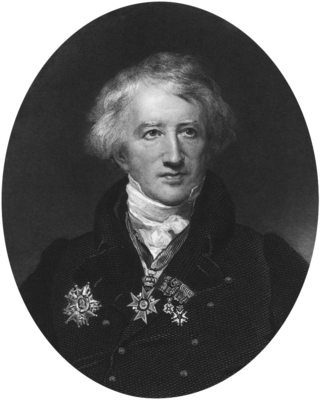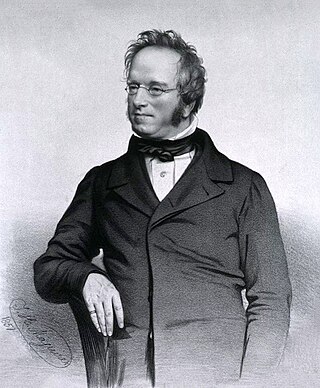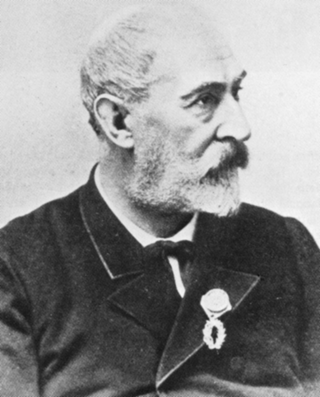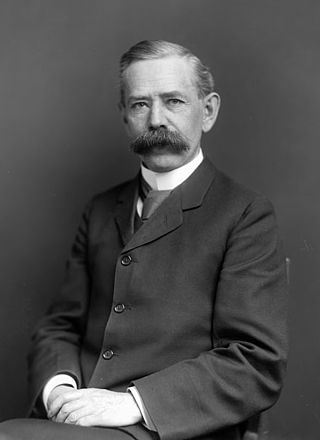
A mammal is a vertebrate animal of the class Mammalia. Mammals are characterized by the presence of milk-producing mammary glands for feeding their young, a neocortex region of the brain, fur or hair, and three middle ear bones. These characteristics distinguish them from reptiles and birds, from which their ancestors diverged in the Carboniferous Period over 300 million years ago. Around 6,400 extant species of mammals have been described and divided into 29 orders.

Eungella National Park is a protected area in Queensland, Australia. It is on the Clarke Range at the end of the Pioneer Valley 80 km west of Mackay, and 858 km northwest of Brisbane. Eungella is noted for the national park which surrounds it. It is considered to be the longest continual stretch of sub-tropical rainforest in Australia. The original inhabitants are the Wirri people. The park is covered by dense rainforest and is known for its platypuses.

Jean Léopold Nicolas Frédéric, Baron Cuvier, known as Georges Cuvier, was a French naturalist and zoologist, sometimes referred to as the "founding father of paleontology". Cuvier was a major figure in natural sciences research in the early 19th century and was instrumental in establishing the fields of comparative anatomy and paleontology through his work in comparing living animals with fossils.

Timeline of paleontology

John Gould was an English ornithologist who published monographs on birds, illustrated by plates produced by his wife, Elizabeth Gould, and several other artists, including Edward Lear, Henry Constantine Richter, Joseph Wolf and William Matthew Hart. He has been considered the father of bird study in Australia and the Gould League in Australia is named after him. His identification of the birds now nicknamed "Darwin's finches" played a role in the inception of Darwin's theory of evolution by natural selection. Gould's work is referenced in Charles Darwin's book, On the Origin of Species.

John Edward Gray was a British zoologist. He was the elder brother of zoologist George Robert Gray and son of the pharmacologist and botanist Samuel Frederick Gray (1766–1828). The standard author abbreviation J.E.Gray is used to indicate this person as the author when citing a botanical name. The same is used for a zoological name.

Coenraad Jacob Temminck was a Dutch patrician, zoologist and museum director.

Henri Marie Ducrotay de Blainville was a French zoologist and anatomist.

Edward Blyth was an English zoologist who worked for most of his life in India as a curator of zoology at the Royal Asiatic Society of Bengal in Calcutta.
This page features lists of species and organisms that have become extinct. The reasons for extinction range from natural occurrences, such as shifts in the Earth's ecosystem or natural disasters, to human influences on nature by the overuse of natural resources, hunting and destruction of natural habitats.

The Academy of Natural Sciences of Drexel University, formerly the Academy of Natural Sciences of Philadelphia, is the oldest natural science research institution and museum in the Americas. It was founded in 1812, by many of the leading naturalists of the young American republic with an expressed mission of "the encouragement and cultivation of the sciences". It has sponsored expeditions, conducted original environmental and systematics research, and amassed natural history collections containing more than 17 million specimens. The Academy also organizes public exhibits and educational programs for both schools and the general public.

Cetology or whalelore is the branch of marine mammal science that studies the approximately eighty species of whales, dolphins, and porpoises in the scientific order Cetacea. Cetologists, or those who practice cetology, seek to understand and explain cetacean evolution, distribution, morphology, behavior, community dynamics, and other topics.

Marcos Jiménez de la Espada (1831–1898) was a Spanish zoologist, herpetologist, explorer and writer, born in Cartagena, Spain, although he spent most of his life in Madrid, where he died. He is known for participating in the Pacific Scientific Commission, with whom he traveled America from 1862 to 1865. He also published several works on geography and history of the American continent.
The Animal Diversity Web (ADW) is a non-profit group that hosts an online database site that collects natural history, classification, species characteristics, conservation biology, and distribution information on species of animals. The website includes photographs, sound clips, and a virtual museum.

Andrew Dickson Murray was a Scottish lawyer, botanist, zoologist and entomologist. Murray studied insects which caused crop damage, specialising in the Coleoptera. In botany, he specialised in the Coniferae, in particular the Pacific rim conifer species.
Amphibian Species of the World 6.2: An Online Reference (ASW) is a herpetology database. It lists the names of frogs, salamanders and other amphibians, which scientists first described each species and what year, and the animal's known range.

Edgar Alexander Mearns was an American surgeon, ornithologist and field naturalist. He was a founder of the American Ornithologists' Union.

The history of paleontology traces the history of the effort to understand the history of life on Earth by studying the fossil record left behind by living organisms. Since it is concerned with understanding living organisms of the past, paleontology can be considered to be a field of biology, but its historical development has been closely tied to geology and the effort to understand the history of Earth itself.

Mrs. Gould's sunbird is a sunbird species native to forests and shrublands from the southern foothills of the Himalayas to Southeast Asia.

Le Règne Animal is the most famous work of the French naturalist Georges Cuvier. It sets out to describe the natural structure of the whole of the animal kingdom based on comparative anatomy, and its natural history. Cuvier divided the animals into four embranchements, namely vertebrates, molluscs, articulated animals, and zoophytes.
















